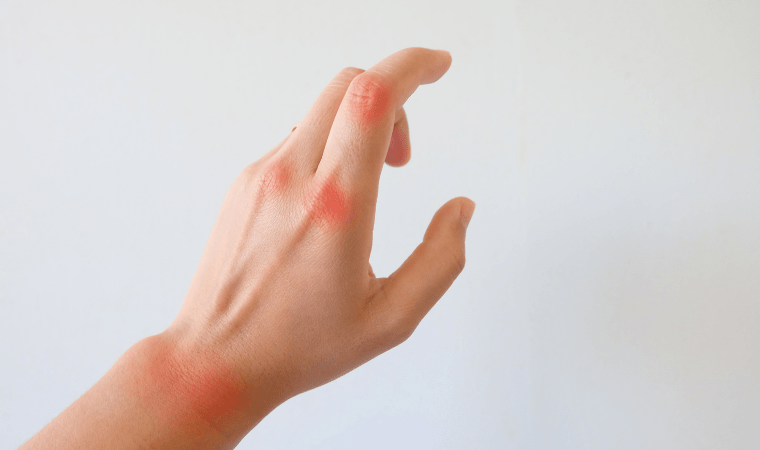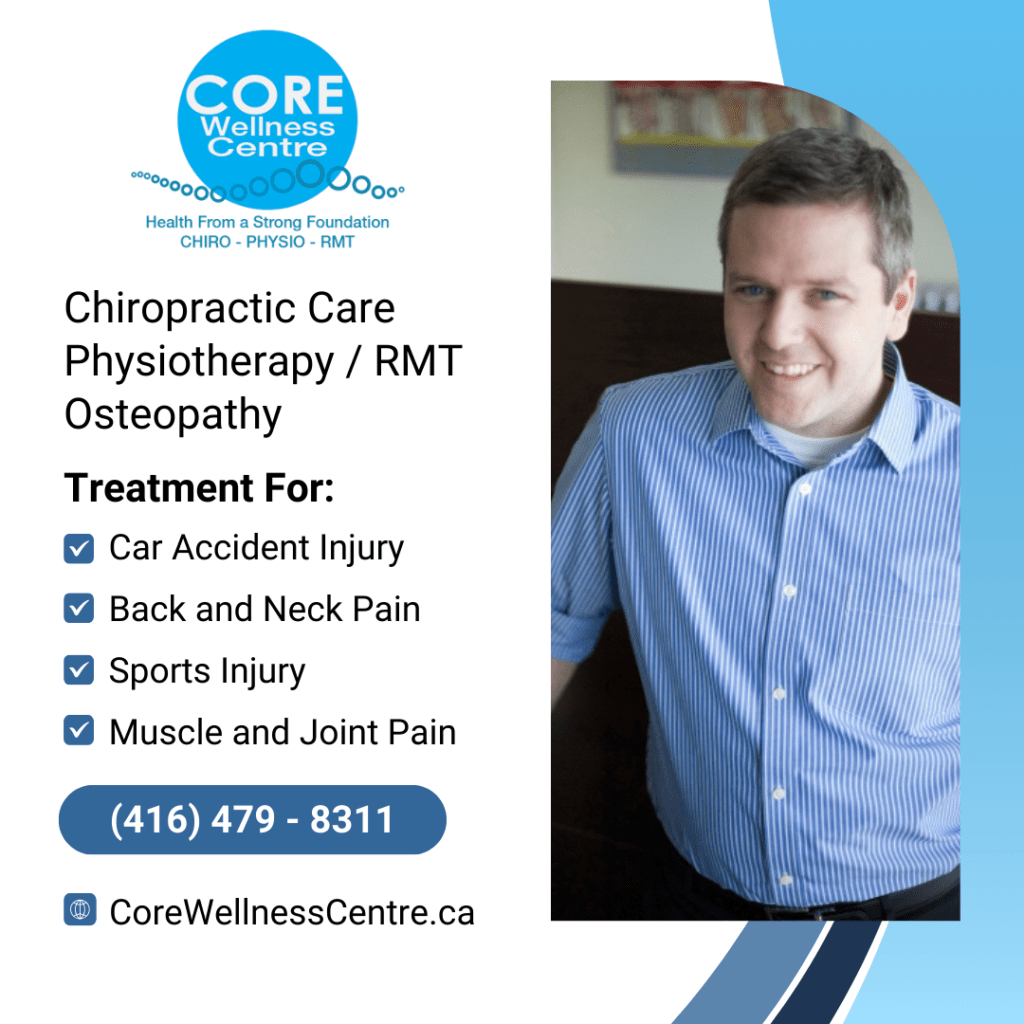Get Back to Your Activities With Physiotherapy for Rheumatoid Arthritis

Do you wake up with stiff, painful joints every morning, struggling to perform simple tasks that once came naturally? Are you finding it increasingly difficult to pursue the activities you love because rheumatoid arthritis (RA) has taken control of your daily life?
If so, you’re likely searching for effective ways to ease your symptoms and regain control.
Rheumatoid arthritis is a chronic autoimmune disease where your body’s immune system mistakenly attacks the lining of your joints. This leads to inflammation, causing pain, stiffness, swelling, and fatigue.
According to recent global health data, approximately eighteen million people worldwide were living with rheumatoid arthritis in 2019, with women comprising about seventy percent of this population [1].
Physiotherapy for rheumatoid arthritis can significantly reduce pain, improve mobility, and help you live a fuller, more active life. At Core Wellness Centre, we offer Physiotherapy, Cold Laser Therapy, Shockwave Therapy and Ultrasound as a valuable tool for overcoming RA symptoms and getting back to what you enjoy doing.
Schedule an appointment today to explore how physiotherapy can alleviate your rheumatoid arthritis symptoms and improve your daily life.
We offer Direct Billing and facilitate WSIB and MVA Claims
CALL us on (416) 479 – 8311 TODAY
or simply book online below
How Does Physiotherapy for Rheumatoid Arthritis Help?

Physiotherapy is focused on restoring and maintaining movement and function.
At Core Wellness Centre, our physiotherapists are experts in the muscle and body system and use a variety of techniques to help people recover from injuries, manage chronic conditions, and improve their overall physical well-being.
Unlike some other treatments that may focus solely on pain relief, physiotherapy addresses the underlying causes of your symptoms. It aims to improve your joint mobility, muscle strength, and overall function.
Comprehensive physiotherapy for rheumatoid arthritis programs have been shown to significantly augment medical therapy by improving the management of rheumatoid arthritis and reducing handicaps in daily living, offering patients practical strategies for managing their symptoms while working toward functional improvement [2].
How Physiotherapy Helps with Rheumatoid Arthritis Specifically

Rheumatoid arthritis presents unique challenges, including pain, stiffness, reduced range of motion, and muscle weakness. Physiotherapy for rheumatoid arthritis directly addresses these challenges through personalized treatment plans.
The chronic inflammation that defines rheumatoid arthritis creates a cascade of consequences including pain, joint effusion and swelling, muscle weakness and atrophy, reduced joint range of motion, altered movement patterns, decreased cardiovascular fitness, and progressive functional decline if left unaddressed [1][2].
These impairments are not always in isolation but interact in complex ways, with pain leading to movement avoidance, causing muscle weakness and joint stiffness, weakness and stiffness further limiting function, and contributing to cardiovascular deconditioning and distress.
Physiotherapy for rheumatoid arthritis treatment plans are tailored to your specific needs and may include exercises, manual therapy, and other techniques to help you achieve your goals.
The personalized nature of physiotherapy treatment plans distinguishes this approach from generic exercise programs or one-size-fits-all interventions, recognizing that rheumatoid arthritis presents differently in each individual with varying patterns of joint involvement, disease severity, functional limitations, and personal goals.
Goals of Physiotherapy for Rheumatoid Arthritis
The goals of physiotherapy for RA are multifaceted and aim to improve your overall quality of life. These goals include:
- Pain reduction: Managing and alleviating pain through various techniques.
- Improved joint mobility and range of motion: Increasing flexibility and reducing stiffness.
- Increased muscle strength and endurance: Supporting and protecting your joints.
- Reduced stiffness: Easing stiffness, especially morning stiffness.
Improved balance and coordination: Preventing falls and improving stability. - Enhanced overall function and quality of life: Making daily tasks easier and more enjoyable.
Before initiating physiotherapy treatment, comprehensive assessment determines the specific needs of each patient in accordance with their impairments, activity limitations, and participation restrictions.
A thorough physical assessment includes evaluation of functional abilities and a measurement of range of motion for all affected joints, muscle strength testing using either manual assessment or equipment, postural assessment to identify biomechanical factors contributing to symptoms or dysfunction, and evaluation of respiratory function particularly in patients with more advanced disease.
Key Benefits of Physiotherapy for Rheumatoid Arthritis
Physiotherapy offers a wide range of benefits for people with rheumatoid arthritis, impacting various aspects of their lives. Strong evidence accumulated over recent decades demonstrates that exercise and physical therapy interventions produce clinically meaningful improvements across various outcomes, with effects observed on pain levels, physical function, disease activity measures, cardiovascular fitness, muscle strength, and quality of life indicators [3].
Physiotherapy for Pain Management

Pain is a major symptom of RA, and physiotherapy can help you manage it effectively.
Exercise therapy, when appropriately prescribed and progressed, has been demonstrated to reduce pain in individuals with rheumatoid arthritis through many mechanisms.
Rheumatoid Arthritis treatment is for reducing inflammatory markers in the systemic circulation and local tissues, improving joint nutrition through enhanced fluid circulation, strengthening periarticular muscles to reduce joint stress during movement, and enhancing overall fitness which correlates with reduced pain perception.
Physiotherapists use various techniques to alleviate pain, including:
Manual therapy: Hands-on techniques to mobilize joints and soft tissues.
Exercise: Strengthening and stretching exercises to improve joint function and reduce pain.
Modalities: Using heat, cold, ultrasound, cold laser therapy, shockwave therapy, to reduce pain and inflammation.
Pain education is also crucial. Your physiotherapist will teach you about your condition and how to manage pain effectively through self-management strategies.
Our Physiotherapists play a key role in educating patients about the differences between appropriate therapeutic pain that signals beneficial tissue adaptation and harmful pain that indicates excessive stress or injury, helping individuals navigate the sometimes confusing task of determining appropriate exercise intensity and progression.
Education about pacing strategies, energy conservation techniques, joint protection principles, and stress management can help patients avoid pain exacerbations while maintaining optimal activity levels for preserving function and quality of life.
Improved Joint Mobility and Range of Motion
Stiffness and reduced range of motion are common in RA. Physiotherapy can help improve joint mobility and flexibility through:
Exercises: Gentle range of motion exercises to maintain joint flexibility.
Manual therapy: Techniques to reduce stiffness and improve joint movement.
Range-of-motion exercises form the foundation of any exercise program for rheumatoid arthritis, with recommendations that individuals move all affected joints through their full available range at least once daily to prevent contracture development and maintain functional mobility.
These exercises can be performed actively by the patient using their own muscle power, actively with assistance from the therapist or adaptive equipment when muscle weakness limits independent movement, or passively with the therapist moving the joint when severe inflammation or pain restricts active motion.
During acute disease flares characterized by significant joint inflammation and swelling, gentle passive or active-assisted range of motion exercises may be most appropriate, gradually progressing to more active movement as inflammation subsides and pain decreases.
For example, gentle range of motion exercises for fingers, wrists, elbows, shoulders, hips, knees, and ankles can help reduce stiffness and improve flexibility. The timing and progression of range of motion interventions require careful consideration of disease activity status, as exercising acutely inflamed joints too aggressively can exacerbate inflammation and potentially accelerate joint damage.
During periods of active inflammation characterized by hot, swollen, tender joints, gentle range of motion exercises performed once or twice daily through comfortable ranges represent the most appropriate approach, avoiding stretching at end-range positions or applying excessive force that might irritate already inflamed tissues.
Increased Muscle Strength and Endurance
Weak muscles can worsen joint pain and instability. Strengthening exercises can support and protect your joints.
Muscle weakness represents a nearly universal finding in individuals with rheumatoid arthritis, arising through multiple mechanisms including disease-related muscle atrophy, inflammation-induced changes in muscle metabolism, physical inactivity related to pain and fatigue, corticosteroid medication effects, and altered movement patterns that reduce normal muscle loading.
This weakness profoundly impacts function and quality of life, as adequate muscle strength proves essential for supporting and protecting joints during movement, performing daily activities efficiently, maintaining postural stability, and preserving cardiovascular health through the capacity for sustained physical activity.
It’s important to use proper form and gradually increase the intensity of exercises to avoid injury.
Strengthening exercises form an essential component of comprehensive physiotherapy programs for rheumatoid arthritis, with strong evidence demonstrating that properly designed resistance training can increase muscle strength and mass, improve functional capacity, reduce pain, and slow or prevent disease progression without exacerbating inflammation or accelerating joint damage.
Enhanced Function and Daily Activities
Physiotherapy can help you perform daily tasks more easily, such as dressing, cooking, and walking. By improving your strength, mobility, and pain management, you’ll be able to participate more fully in life.
Adaptive equipment and assistive devices can also play a role. Your physiotherapist can recommend devices to help you with specific tasks, such as reaching tools or modified kitchen utensils.
The use of adaptive equipment and assistive devices can further enhance hand function by reducing the force requirements and joint stress associated with various tasks, enabling individuals to perform activities that might otherwise be impossible or excessively painful.
Physiotherapy Treatment for Rheumatoid Arthritis

Our physiotherapists use a variety of techniques to treat RA, tailored to your individual needs.
Exercise Therapy
Range of Motion Exercises: Gentle movements to maintain joint flexibility. For example, arm circles, leg swings, and finger stretches.
Strengthening Exercises: Building muscle to support joints. Examples include bicep curls with light weights or resistance bands, and wall push-ups.
Aerobic Exercise: Cardiovascular exercise for overall health and RA management. Low-impact options like walking, swimming, or cycling are ideal.
Manual Therapy
Hands-on techniques to mobilize joints and soft tissues. This may include joint mobilization, soft tissue massage, and stretching performed by our qualified physiotherapists.
Joint mobilization techniques involving carefully graded, oscillatory movements of joint surfaces within their normal range can reduce pain through multiple mechanisms including stimulating mechanoreceptors that inhibit pain transmission, improving synovial fluid circulation, reducing muscle guarding and spasm, and restoring normal joint mechanics that reduce stress concentrations..
Cold Laser Therapy (Low-Level Laser Therapy - LLLT)
Cold laser therapy uses light to stimulate tissue healing and reduce inflammation. A comprehensive systematic review and meta-analysis examining low-level laser therapy for rheumatoid arthritis concluded that this intervention could improve patients’ quality of life, reduce pain, and enhance physical movement, with effects demonstrated across multiple studies using various treatment protocols [4].
Shockwave Therapy
Shockwave therapy delivers acoustic waves to stimulate healing and reduce pain. It may be used for certain RA-related conditions, such as plantar fasciitis or tendonitis. At Core Wellness Centre, shockwave therapy can alleviate pain associated with arthritis by stimulating the body’s natural healing processes and reducing inflammation.
Ultrasound
Ultrasound uses sound waves to reduce pain and inflammation. It can be applied to affected joints to provide relief and our therapeutic ultrasound can help manage arthritis by reducing inflammation and promoting tissue healing.
Physiotherapy offers a range of benefits for people with rheumatoid arthritis, including pain relief, improved mobility, increased strength, and enhanced function. If you’re living with RA, consider contacting Core Wellness Centre to develop a personalized treatment plan that can help you regain control of your life.
Ready to take the next step? Contact Core Wellness Centre today.
We offer Direct Billing and facilitate MVA and WSIB Claims
CALL us on (416) 479 – 8311 TODAY
or simply book online below
Sources and References
[1] https://www.who.int/news-room/fact-sheets/detail/rheumatoid-arthritis
[2] https://pmc.ncbi.nlm.nih.gov/articles/PMC1395797/
[3] https://pmc.ncbi.nlm.nih.gov/articles/PMC10082923/
[4] https://pmc.ncbi.nlm.nih.gov/articles/PMC9852831/

